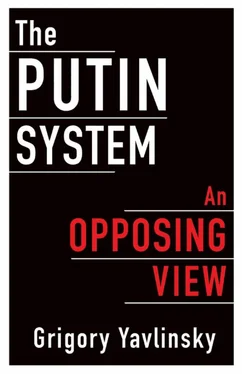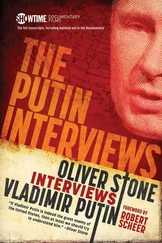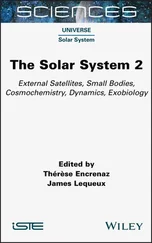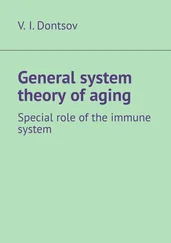As a matter of fact, the Kremlin’s new strategy, based on emphasizing the regime’s ideological persona, is much riskier than its prior approach, as it awakens and mobilizes the potentially destructive elements in society. The ruling circle clearly expects to be able to keep these elements under control and to use them exclusively against its opponents. However, controlling destructive forces of nature is a very complicated task. To assume that these blind forces will not erupt and destroy society itself, with its tricky and fragile system of balances, means accepting huge risks at best. At worst, the rulers risk being liable for the disastrous consequences of a false confidence in the government’s powers of control.
CORRUPTION AS A SYSTEM
The system of governance that has taken shape in Russia is not just an authoritarian regime. It is a system functioning within the distinctive conditions of the transformation of the Soviet system (which degenerated and thus failed to meet the challenges of its time) into capitalism of a peripheral type. This is a capitalism that has no internal sources for its growth and is functioning on the fringe of the global market economy.
These conditions have inevitably imparted some peculiar features to Russia’s authoritarianism. The first among these characteristics is certainly the exorbitant level of corruption that is endemic to the system. In principle, corruption exists everywhere. To some extent, it affects every highly organized society. Moreover, the higher the level of a society’s organization, the larger is the element of corruption—if understood not in the narrow sense, as primitive bribe-taking, but more broadly, as including conflicts of interests among government officials, the practice of taking advantage of insider information, deliberate promotion and servicing of private interests in government, and so on. Likewise, a number of borderline phenomena characteristic of a developed society also can be viewed as a form of corruption in this broad sense of the term. These include the practice of legislators’ advocacy of the interests of their campaign donors, or elected officials’ sharing of information with “their” media and consultants. Thus, when we say that Russia’s political system and its analogs in other countries are characterized by systemic corruption, what is distinctive here is not the presence of corruption per se but rather its large scale and its many forms, or, more precisely, the special role played by corruption in the functioning of the system in its entirety.
Of course, the forms of corruption that are observed in present-day Russia are not unique to it and are fully in line with those that are known from elsewhere; they are described a thousand times in academic and general-audience writings and even in fiction. Naturally, at the lowest layers of governance, where agencies handle relatively small amounts of resources, the more primitive forms of corruption are more prevalent. These include trivial theft and bribery, kickbacks to officials for contracting with public procurement funds, and procuring from firms that belong—directly or indirectly, fully or in part—to those who allocate and manage these public contracts. These forms of corruption certainly do exist at the higher levels of bureaucracy. However, at that level they also are supplemented with more intricate forms, such as administrative protection for one’s own family business and securing preferential conditions for it; building sophisticated networks of family relationships and friendships aimed at taking personal advantage of one’s high-level government status; tricky, multilayered mechanisms of extortion from private businesses; and so on.
At the same time, in the case of Russia, the underdevelopment and extreme vulnerability of social and economic institutions under the peripheral type of capitalism have shaped two distinctive features that set its corruption apart from the type that exists in the countries belonging to the core of the world capitalist system:
1. the relative underdevelopment of sophisticated and veiled forms of corruption that require a higher-level institutional structure for their implementation; and
2. a more explicit relationship between corruption-driven enrichment and the outflows of capital from Russia.
The country’s comparatively unsophisticated corruption is a predictable consequence of the underdevelopment of large private businesses and the institutions servicing their needs. Indeed, the stock market, which serves as a major tool of corrupt enrichment, using confidential insider information available to high-ranking government officials, plays a very limited role in Russia’s economy. Its trading volume, as well as the range and complexity of its financial instruments, are meager compared to those in global financial centers. Accordingly, there are rather limited gains to be made from using insider information to enrich oneself through stock market operations or other transactions involving financial assets whose value might be predicted based on classified information.
Likewise, the opportunities for private business interests in Russia to lobby for legislation are rather insignificant. One reason for this is that legislative bodies cannot introduce any significant legislation on their own, without the executive authorities. The second reason is that, in general, in a peripheral type of capitalism, the law plays a very limited role in determining the actual parameters of business operations and the distribution of their gains. Under these circumstances, expenditures toward legislative lobbying are unlikely to pay off either in the medium term or in the long term. In addition, using private business resources to secure elected positions in present-day Russia is rather difficult, both because elections are controlled by the authoritarian “power vertical” and because very few elected positions confer any real power and freedom of action in the first place.
On top of this, the distribution of financial flows in this economic reality is so tightly intertwined with government power that it simply does not leave any room for truly complex and multistage forms of influence. That is, those who do not have access to the vertical hierarchy of power have no real means to influence the direction of financial flows in any substantial way. Meanwhile, those who are included in this vertical have no need to complicate the process of taking advantage of their access to financial flows; their appointment in and of itself is viewed by all as an invitation to the party, which includes an implicit mandate for personal enrichment by quite overt, simple, and unsophisticated means.
The second distinctive feature of corruption in Russia, its close connection with the export of capital, is also conditioned by a number of interrelated factors. First, the opportunities for investing corruption-generated revenue inside Russia are limited by high risks. As the volume of such domestic investment grows, these risks increase as well. Under the present system, if the owner of these investments cannot personally manage this capital as a business enterprise, the chances of losing the monies earned by one’s “hard work” and transferred to someone else’s care are unacceptably high.
In addition to the risks involved, the peripheral character of Russia’s capitalism objectively limits productive utilization of new capital. Russia’s main industry—the production and export of oil, gas, and other natural resources—is dominated by a group of big firms, with virtually no entry point for newcomers, especially those with private funds. Manufacturing is viable in only a limited number of areas. And almost all successful high-tech ventures eventually force their owners—in most cases, due to objective factors—to move the business away from Russia and into the intellectual, technological, and organizational space of modern economies of the global core elsewhere in the world. Thus, those who are engaged in corruption-driven primitive accumulation of capital and plan to benefit from it in the future typically invest in foreign assets (primarily real estate or the launch and development of some kind of family business abroad). This represents a significant share of capital outflows from Russia.
Читать дальше












